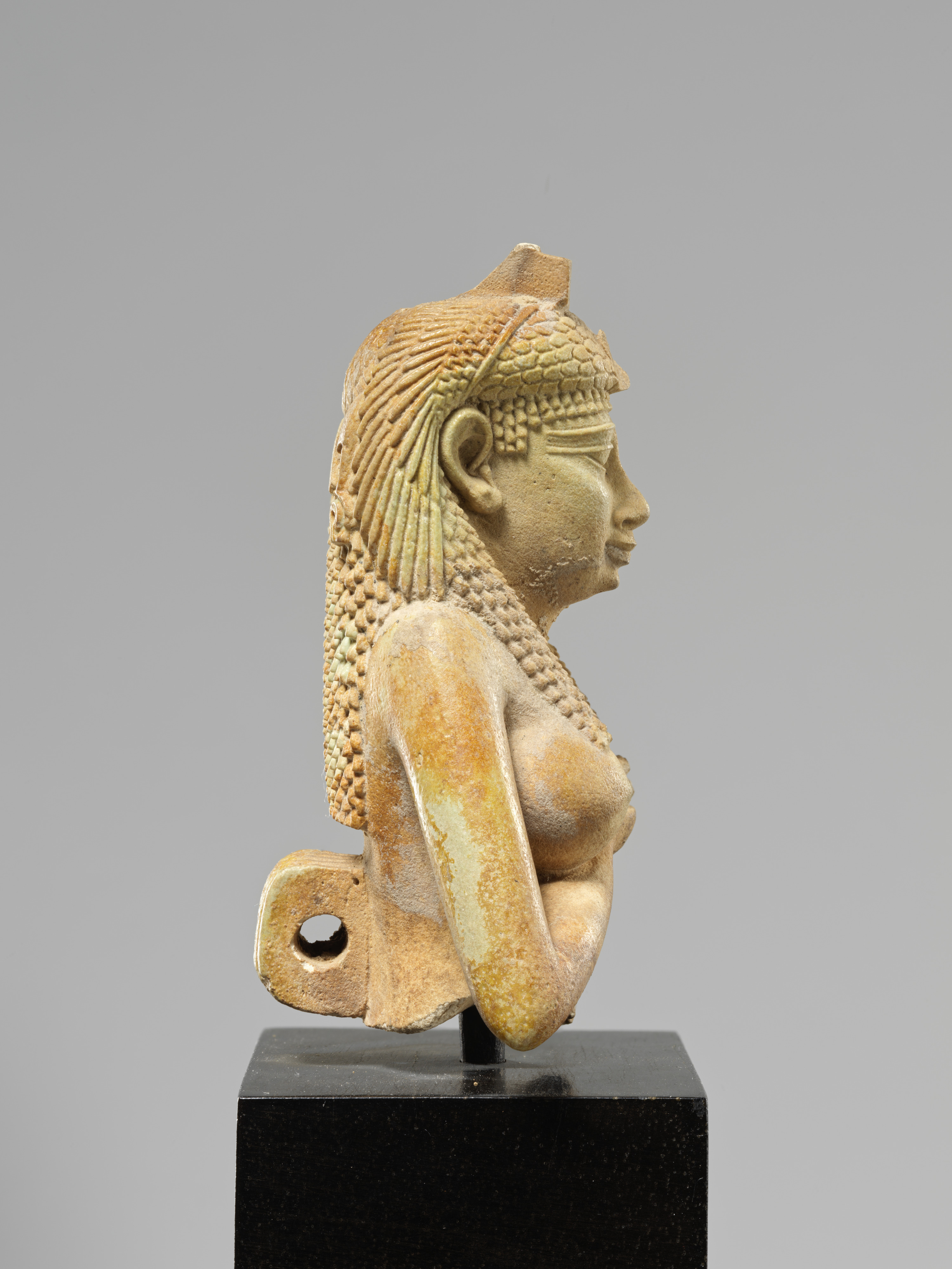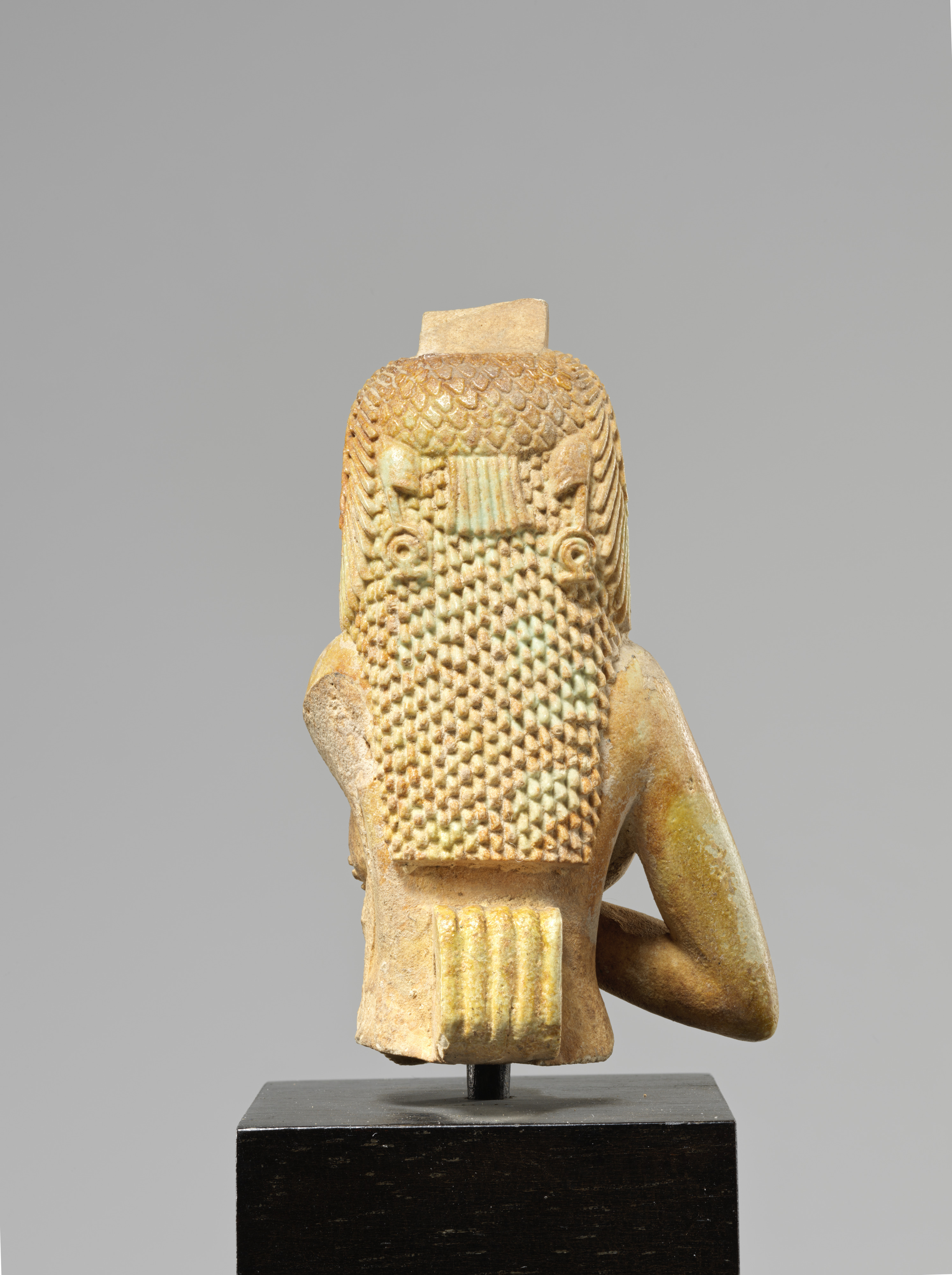Upper part of a figure of Isis nursing Horus
Early Ptolemaic Period
The upper part of an Isis lactans amulet, when complete this would have depicted Isis nursing Horus, her posthumous son with the god Osiris (see 55.121.5). Enough of the figure is preserved to show that the goddess is offering her breast to her baby, although his figure is now missing. Part of the throne hieroglyph that symbolized her name is still visible, over a beautiful example of the vulture headdress that identified her both as a queen and as a divine mother, as the vulture was also the hieroglyph for the latter term (mwt).
The face and form of a second figure of Isis with Horus, of which again only the upper part is preserved, is almost identical to this one, and both also display similarities to certain shabtis, suggesting a date in the early Ptolemaic Period. Additional study of these pieces may allow us to add to our understanding of workshop practices.
Isis was seen as the embodiment of a protective, nurturing mother; figures such as this one would have evoked these qualities for the benefit of the owner.
Due to rights restrictions, this image cannot be enlarged, viewed at full screen, or downloaded.
This artwork is meant to be viewed from right to left. Scroll left to view more.




